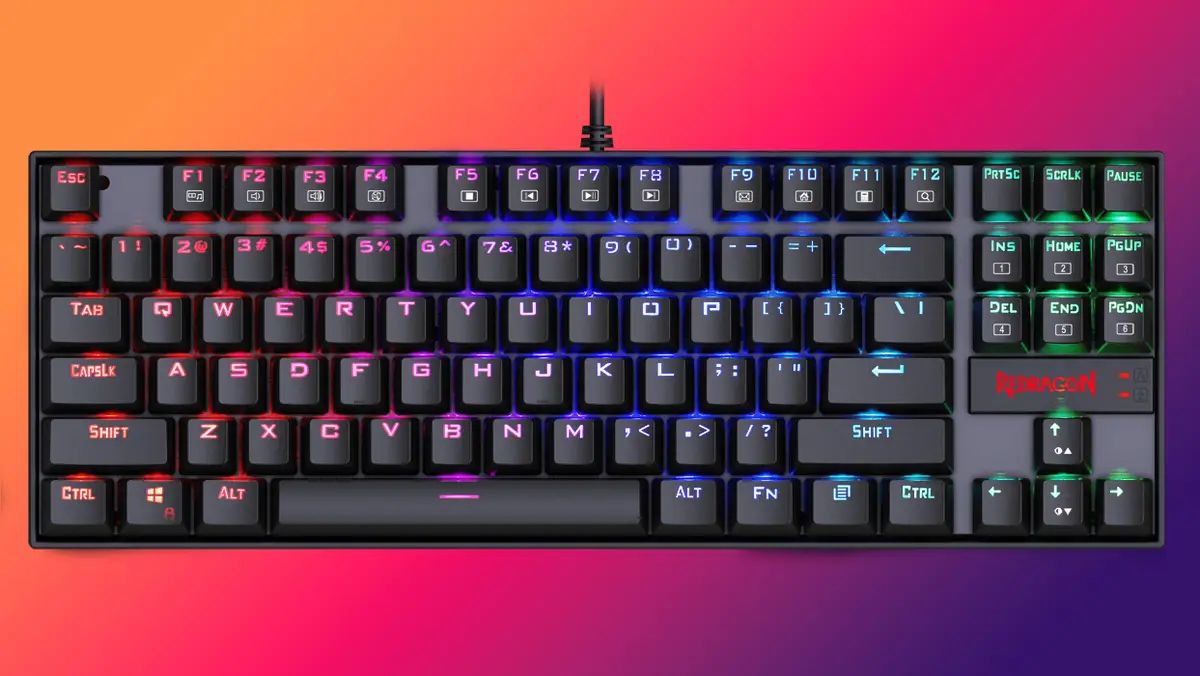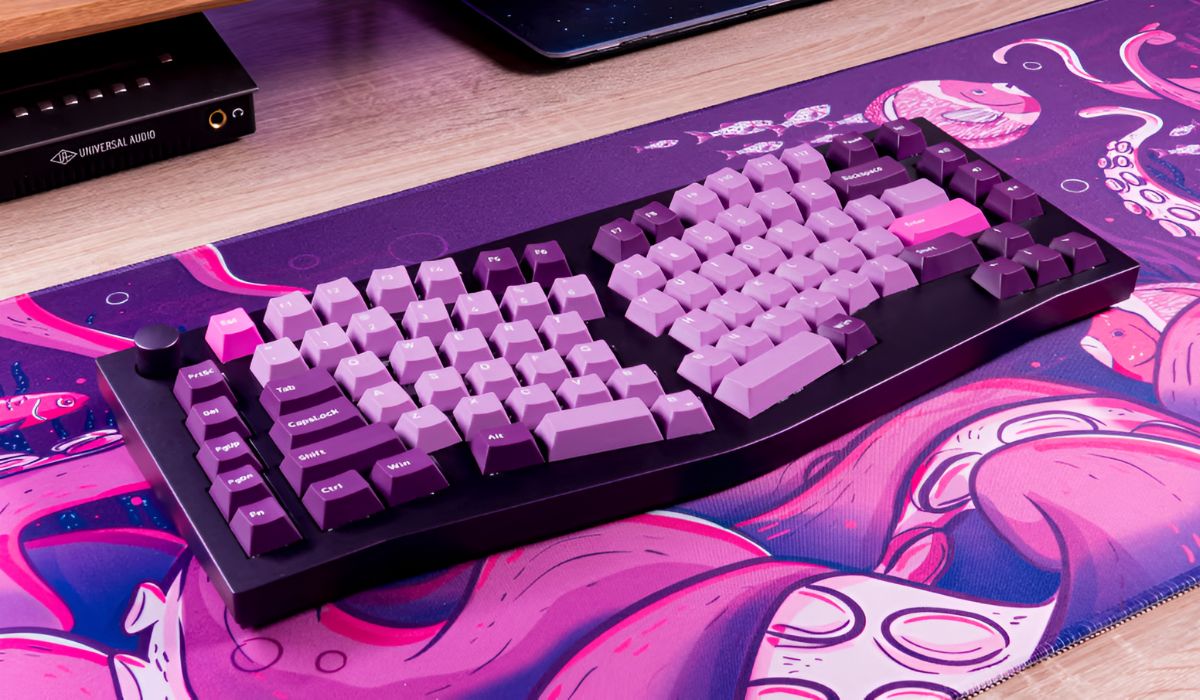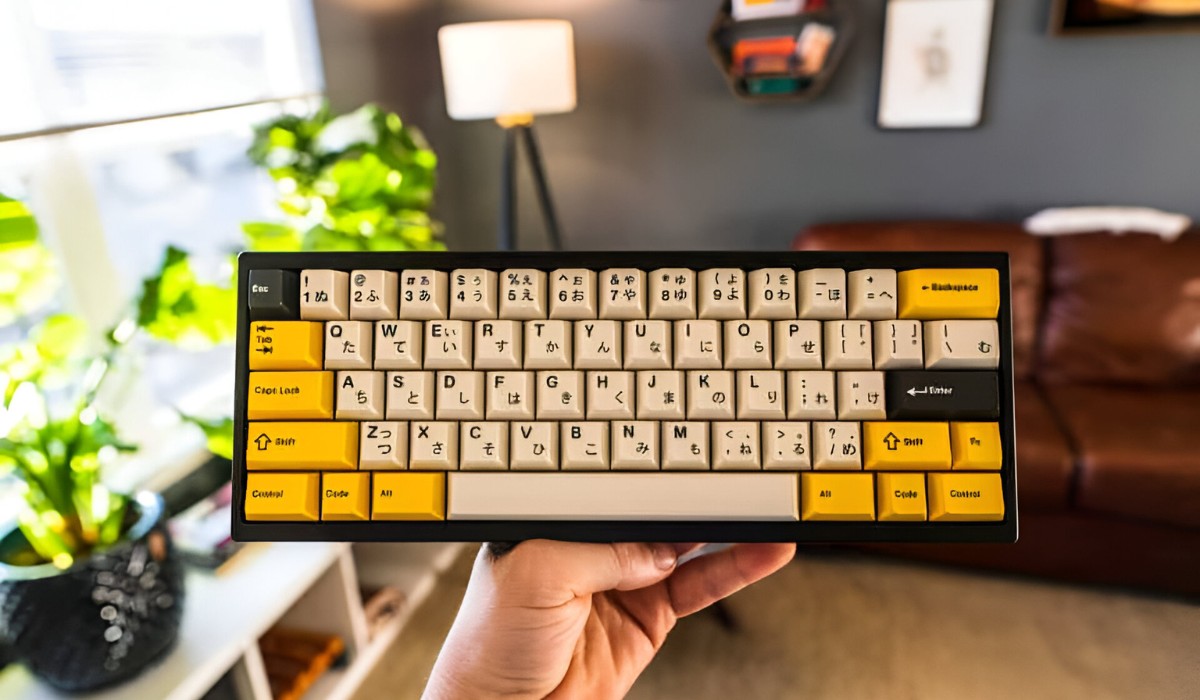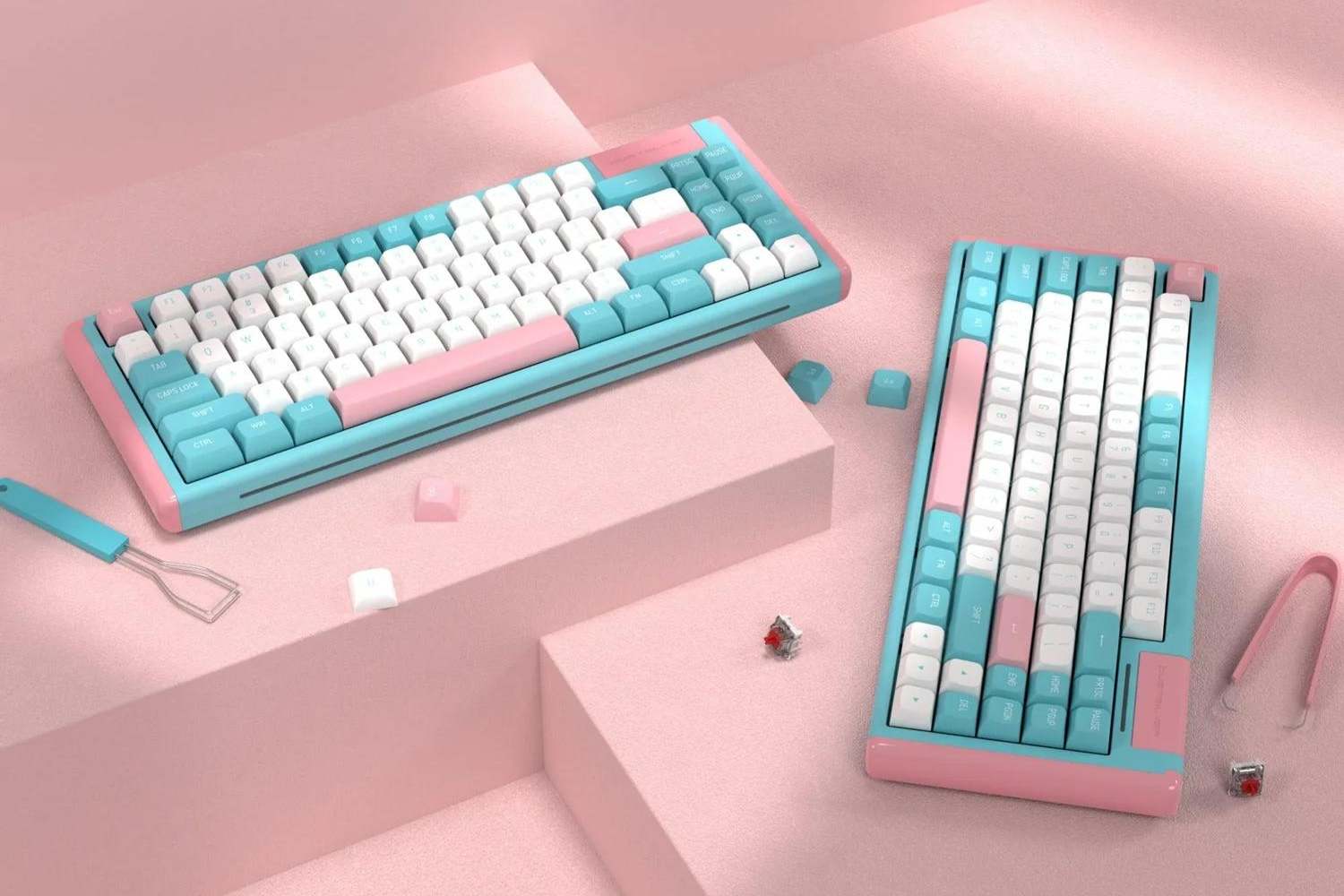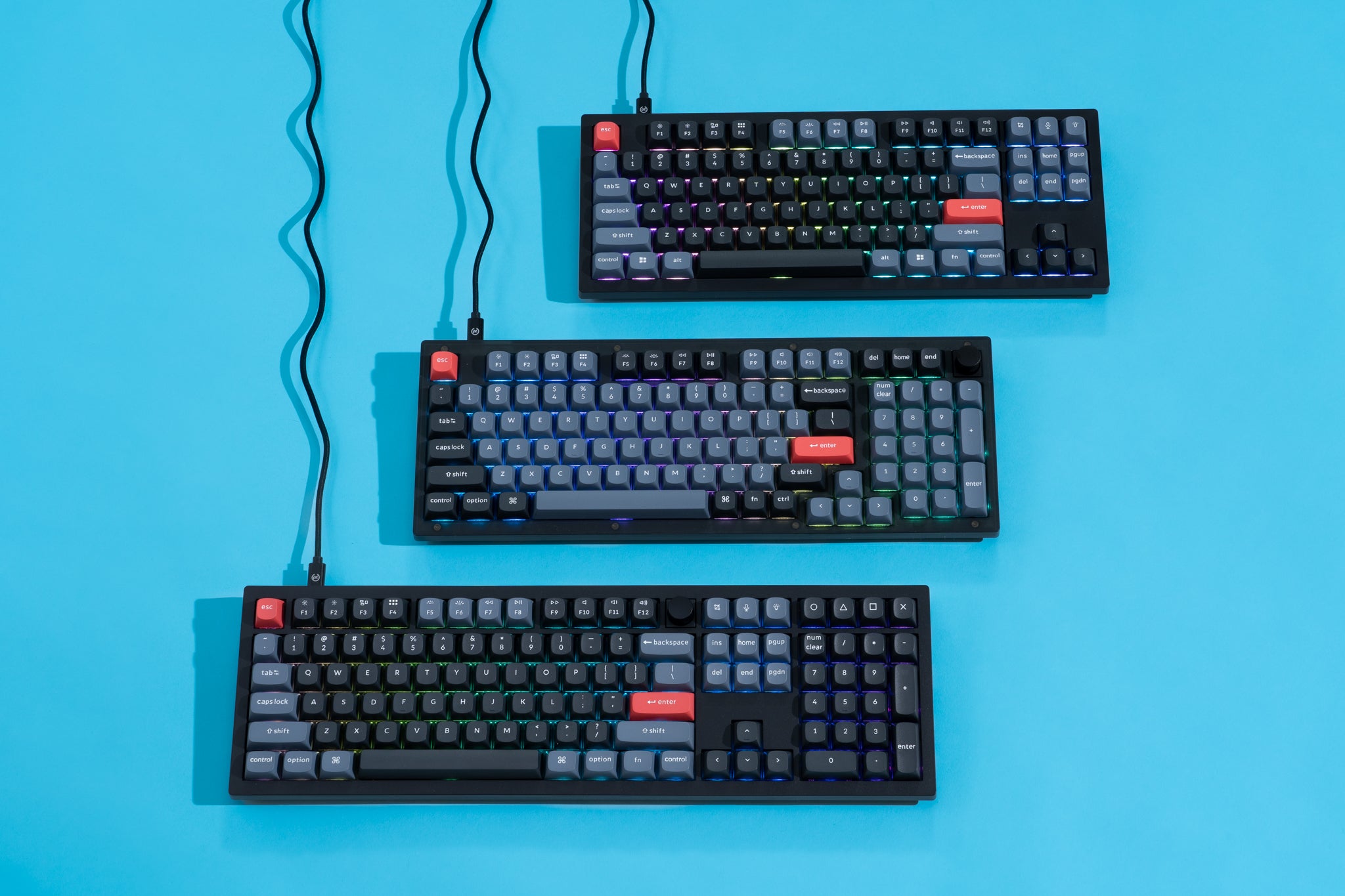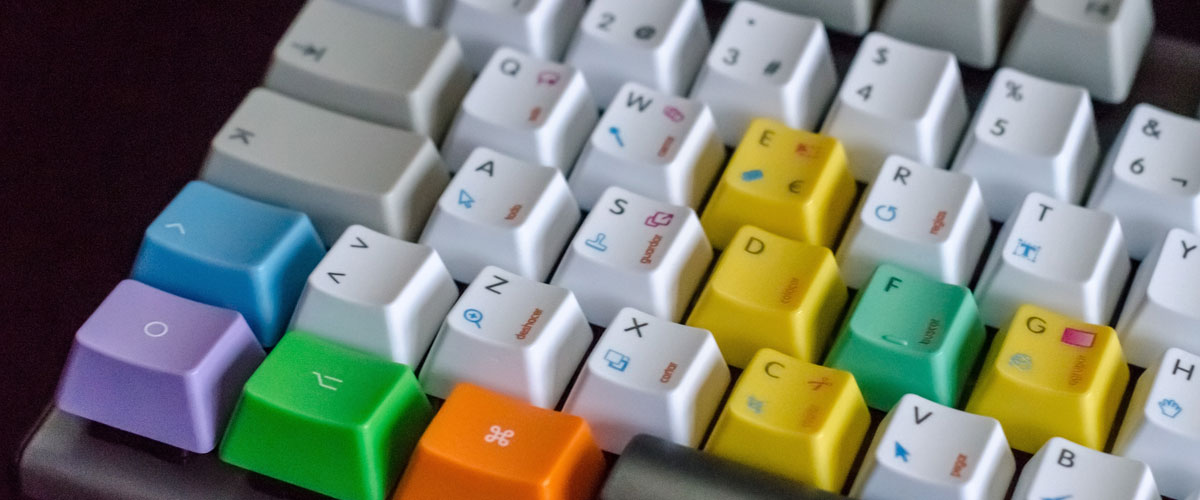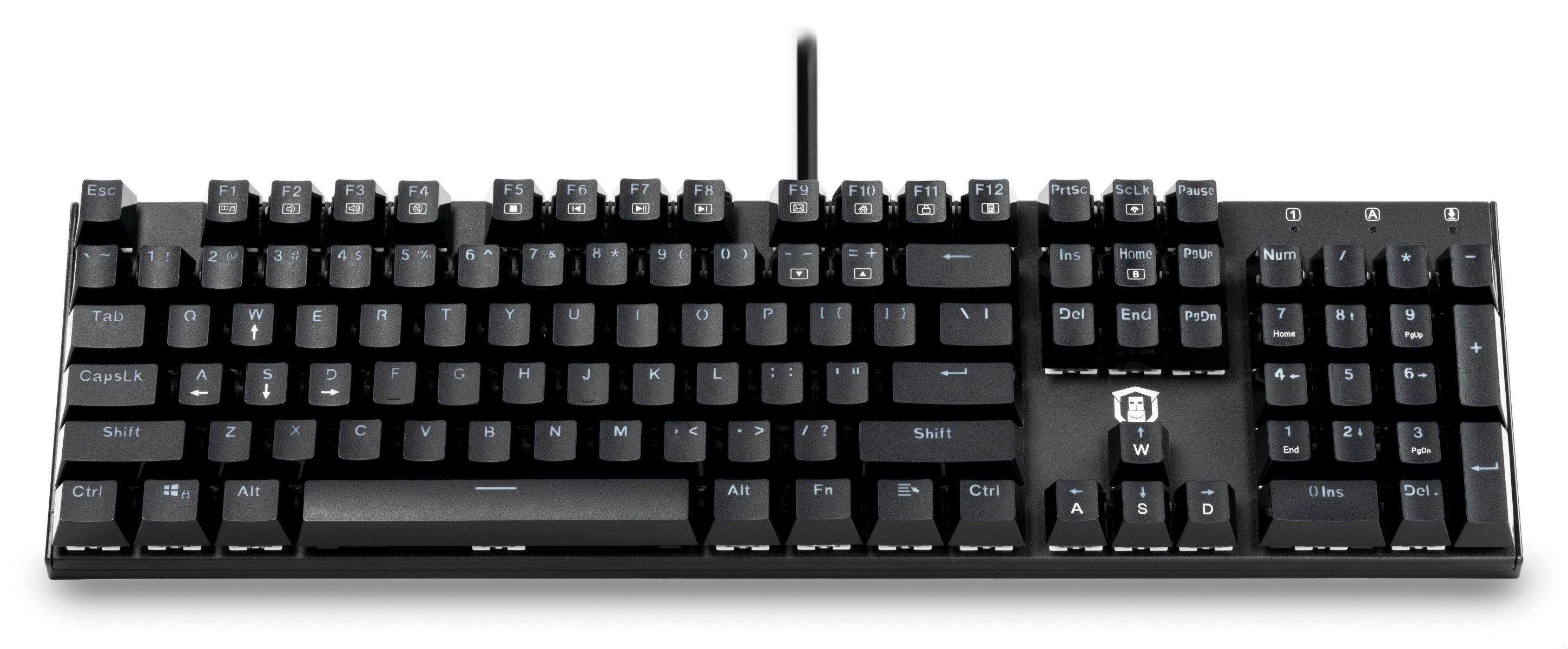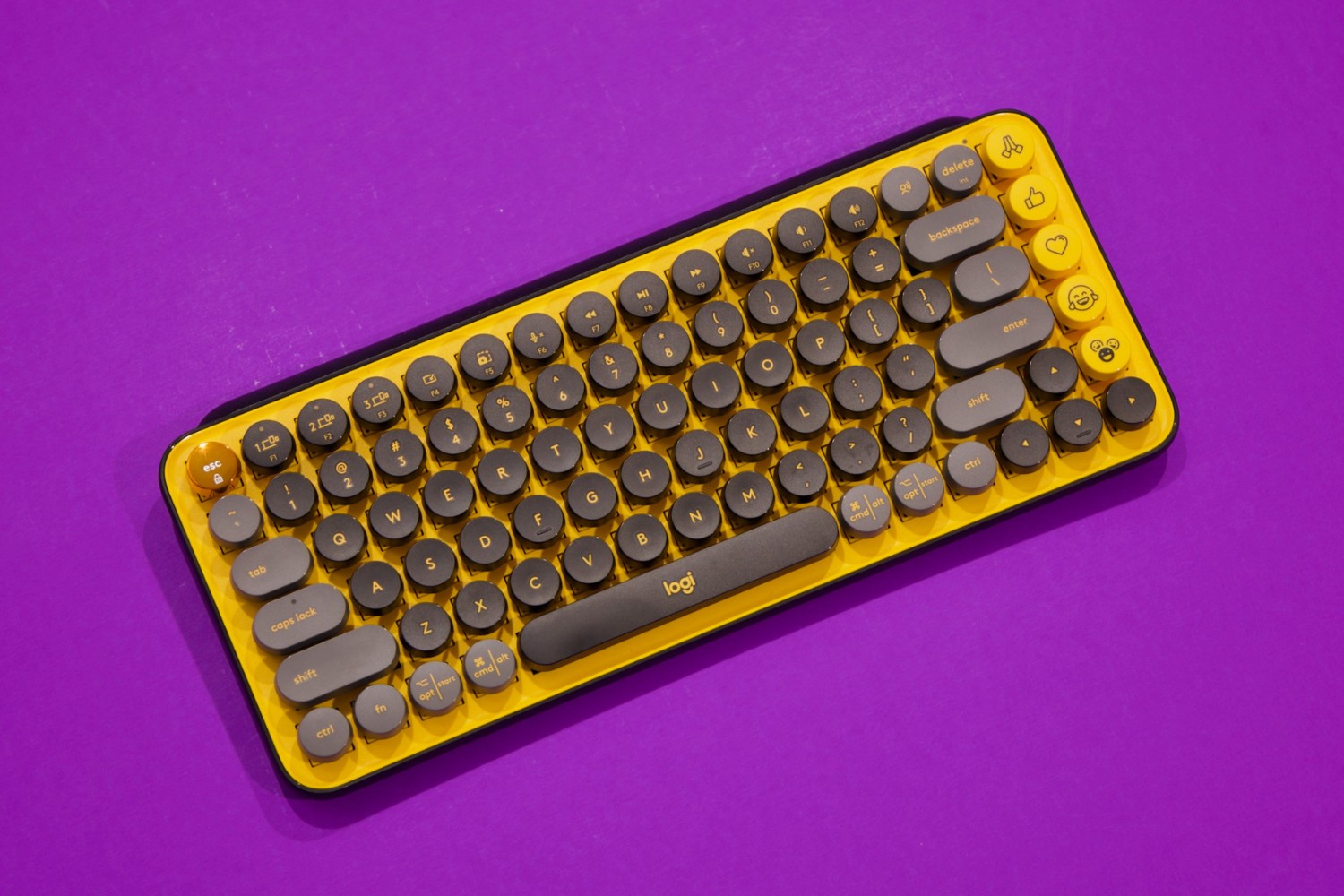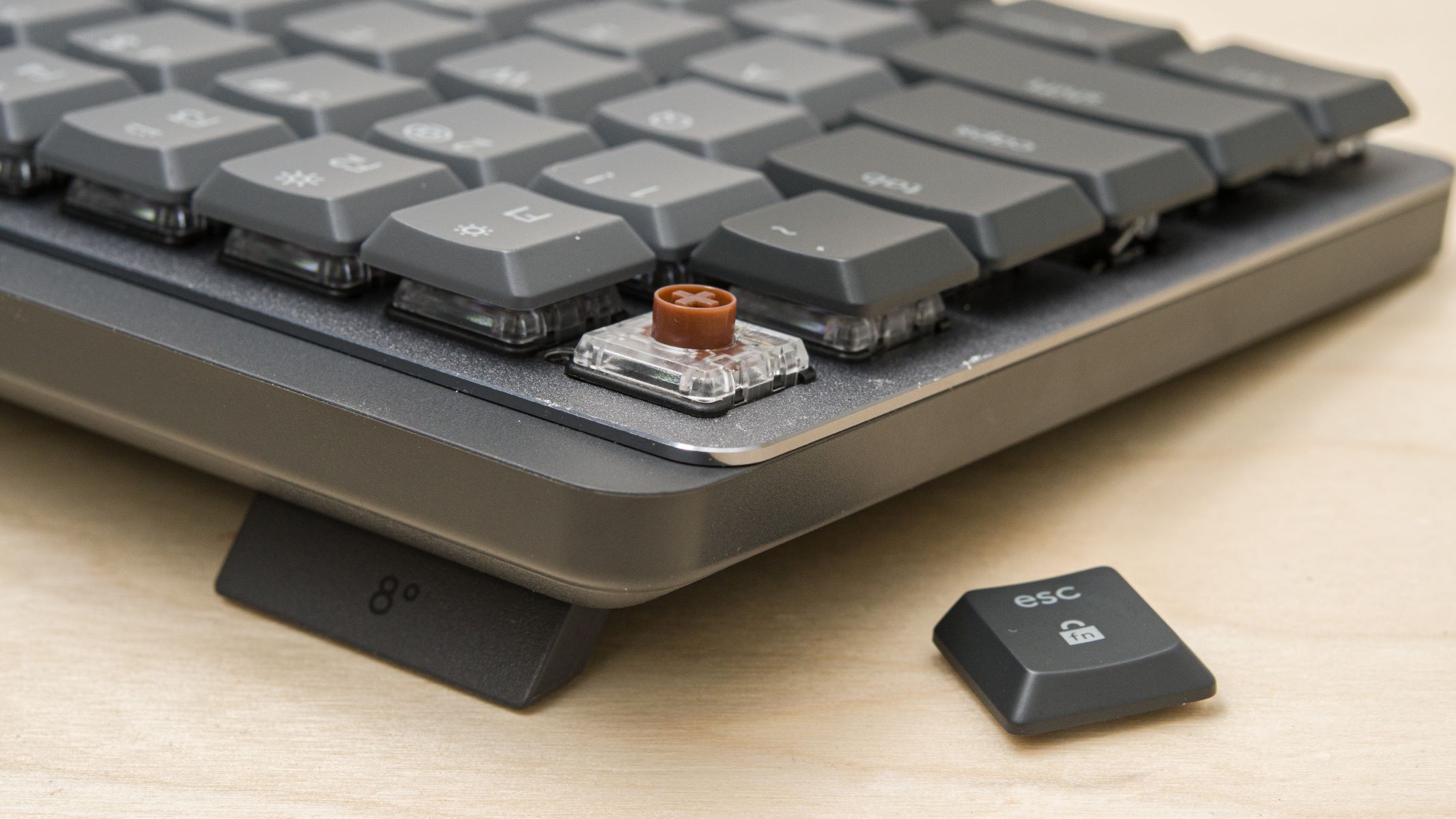Introduction
Welcome to the world of mechanical keyboards, where typing becomes an art form. If you’ve ever found yourself frustrated by a mushy keyboard or yearning for a more satisfying typing experience, then a mechanical keyboard might be the answer you’re looking for. In this article, we will explore the wonderful world of mechanical keyboards and discuss why they have become the preferred choice for many users.
Unlike the typical rubber dome keyboards that most of us are accustomed to, mechanical keyboards use individual switches for each key. These switches are comprised of high-quality components that offer a distinct tactile feel and auditory feedback with every keystroke. This provides a more responsive and enjoyable typing experience, which can greatly enhance productivity for writers, programmers, gamers, and anyone who spends a significant amount of time at their computer.
But what sets mechanical keyboards apart from their traditional counterparts? Why should you consider investing in one? The answers lie in their design, versatility, and durability. Mechanical keyboards are built to withstand rigorous usage, making them more reliable and long-lasting than regular keyboards. They also provide customizable options in terms of key switch types, allowing you to find the perfect switch that suits your typing style and preferences.
Whether you’re a casual typist, a professional writer, or a competitive gamer, choosing the right mechanical keyboard can significantly improve your overall typing experience. Some of the key components to consider when selecting a mechanical keyboard include the type of switches used, the layout of the keyboard, the build quality, and additional features such as backlit keys, programmable macros, and media controls.
In the following sections of this article, we will dive deeper into the various types of mechanical switches available, discuss the factors to consider when choosing a mechanical keyboard, explore the benefits of using one, and recommend popular mechanical keyboard brands and models. We will also provide tips on how to maintain and clean your mechanical keyboard to ensure its optimal performance.
What is a mechanical keyboard?
A mechanical keyboard is a type of keyboard that uses individual mechanical switches for each key instead of the rubber dome membrane found in regular keyboards. These switches are designed with high-quality components and mechanisms that provide a unique typing experience.
While traditional rubber dome keyboards require you to press the keys all the way down to register a keystroke, mechanical keyboards actuate at a specific point in their key travel, known as the actuation point. This allows for faster and more accurate typing, as you don’t have to fully depress the keys to register a keystroke.
One of the standout features of mechanical keyboards is their tactile feedback. With each key press, you can feel a slight bump or click, depending on the type of mechanical switch used. This feedback provides a satisfying typing experience and helps you to develop a rhythm and consistency in your typing.
In addition to the tactile feedback, mechanical keyboards also offer audible feedback. Some mechanical switches have a distinct clicking sound when pressed, while others produce a quieter and more subtle sound. This auditory feedback can be especially appealing to users who enjoy the sound of typing or require aural confirmation of their keystrokes.
Another advantage of mechanical keyboards is their durability. Mechanical switches are known for their longevity, with some switches rated to last for millions of keystrokes. This makes mechanical keyboards more resistant to wear and tear compared to rubber dome keyboards, resulting in a longer lifespan for the keyboard.
Furthermore, mechanical keyboards offer a greater degree of customization. Depending on the type of mechanical switch, you can choose between different key switch weights, actuation forces, and tactile feedback profiles. This allows you to tailor the keyboard to your personal preferences and typing style, improving your overall comfort and efficiency.
In summary, a mechanical keyboard is a type of keyboard that uses individual mechanical switches for each key. These switches provide tactile and audible feedback, offer a more durable typing experience, and allow for customization options. With these qualities, mechanical keyboards have become increasingly popular among professionals, gamers, and enthusiasts who value the benefits of a superior typing experience.
Why choose a mechanical keyboard over a regular keyboard?
While regular keyboards may be more common and readily available, there are several compelling reasons to choose a mechanical keyboard instead. Let’s explore some of the key advantages that make mechanical keyboards stand out:
Durability: Mechanical keyboards are built to last. The individual mechanical switches used in these keyboards are designed to withstand millions of keystrokes, making them significantly more durable than the membrane switches found in regular keyboards. This means that mechanical keyboards are less likely to suffer from key failures or become unresponsive over time.
Tactile Feedback: Unlike regular keyboards, mechanical keyboards provide tactile feedback with each keystroke. The mechanical switches, with their distinct actuation points and tactile bumps, offer a satisfying and responsive typing experience. This feedback allows typists to have better control over their keystrokes, resulting in increased accuracy and reduced typing fatigue.
Enhanced Typing Experience: Whether you’re a writer, programmer, or gamer, typing productivity and comfort are crucial. Mechanical keyboards provide a superior typing experience due to their tactile feedback, key rollover capabilities, and customizable options. Some mechanical switches require less force to actuate, reducing finger fatigue during extended typing sessions.
Customization Options: Mechanical keyboards offer a wide range of customization options. With different switch types and keycap options, you can tailor the keyboard to your specific needs and preferences. Whether you prefer a clicky, tactile, or linear switch, there is a mechanical switch out there to suit your typing style. Furthermore, mechanical keyboards often have programmable macro keys, allowing you to automate repetitive tasks or create custom shortcuts.
Aesthetics: Many mechanical keyboards feature stylish and visually appealing designs. From sleek minimalist designs to vibrant and customizable RGB backlighting, mechanical keyboards offer a wide selection of aesthetics to match your personal style and workspace. This makes them a popular choice among gamers, content creators, and professionals who want their keyboard to reflect their personality.
Improved Gaming Performance: Gamers, in particular, can benefit from using a mechanical keyboard. The tactile feedback and low latency of mechanical switches greatly enhance gaming responsiveness and accuracy. Additionally, features such as anti-ghosting and full-key rollover allow for precise key input, ensuring that no keystrokes are missed during intense gaming sessions.
Long-Term Investment: While mechanical keyboards may have a higher upfront cost compared to regular keyboards, they are a long-term investment. With their durability and customizable options, mechanical keyboards are built to withstand years of use and can provide a reliable and enjoyable typing experience over an extended period.
Overall, choosing a mechanical keyboard over a regular keyboard offers numerous benefits, such as durability, tactile feedback, enhanced typing experience, customization options, aesthetics, improved gaming performance, and long-term value. Whether you’re a professional, a gamer, or simply a keyboard enthusiast, opting for a mechanical keyboard can greatly elevate your typing experience.
Key components of a mechanical keyboard
To truly understand and appreciate the functionality and performance of a mechanical keyboard, it’s essential to familiarize yourself with its key components. Let’s take a closer look at the main parts that make up a mechanical keyboard:
1. Mechanical Switch: The mechanical switch is the heart of a mechanical keyboard. It is responsible for registering keystrokes and providing tactile and audible feedback. There are several types of mechanical switches available, each with its own characteristics, such as clickiness, actuation force, and tactile bump.
2. Keycap: The keycap is the visible part of the keyboard that you press down when typing. Keycaps are typically made of plastic, but they can also be made of other materials such as metal or resin. They come in various shapes, sizes, and designs, providing customization options to suit personal preferences.
3. Key Switch Mount: The key switch mount is the mechanism that holds the switches in place on the keyboard’s printed circuit board (PCB). There are two main types of key switch mounts: plate-mounted and PCB-mounted. Plate-mounted switches are attached to a metal plate, providing stability and rigidity, while PCB-mounted switches are directly soldered onto the PCB.
4. Printed Circuit Board (PCB): The PCB is the electronic circuit board that connects all the components of the keyboard and is responsible for transmitting the keystrokes to the computer. It houses the key switches, diodes, and other electrical components that allow the keyboard to function.
5. Stabilizers: Stabilizers are used for larger keys, such as the spacebar, shift keys, and enter key, to ensure they have a consistent and smooth feel when pressed. They help stabilize the keycap and prevent it from wobbling or sticking during typing. Stabilizers can be either plate-mounted or PCB-mounted and come in various designs, including wire and costar stabilizers.
6. Backplate: The backplate is a metal or plastic plate behind the PCB that provides support and rigidity to the keyboard’s structure. It helps to prevent flex and adds stability to the typing experience.
7. Controller: The controller is the brain of the mechanical keyboard. It is responsible for processing the keystrokes and communicating with the computer. The controller often has additional features, such as programmability and macro support, depending on the keyboard’s capabilities.
8. Cable: The cable connects the mechanical keyboard to the computer. Some keyboards come with detachable cables, allowing for easier transportation and customization, while others have fixed cables.
9. Case: The case is the outer shell that encloses the keyboard’s components. It provides protection and aesthetics to the keyboard. Cases can be made of various materials, including plastic, aluminum, or wood, and can have different finishes and designs.
10. LEDs and RGB Lighting: Many mechanical keyboards feature backlighting or RGB lighting options. LEDs (Light-Emitting Diodes) are electronic components that emit light, adding visual appeal and allowing for keyboard customization. RGB lighting enables the user to select from a vast range of colors and lighting effects to match their personal style.
Understanding these key components of a mechanical keyboard helps you appreciate the intricate design and functionality of these devices. Each component plays a vital role in delivering the tactile typing experience, durability, and customization options that mechanical keyboards are known for.
Different types of mechanical switches
When it comes to mechanical keyboards, one of the most crucial aspects to consider is the type of mechanical switch used. Different switches offer varying levels of tactile feedback, actuation force, and typing experience. Let’s explore some of the most popular types of mechanical switches:
1. Cherry MX: Cherry MX switches are one of the most well-known and widely used mechanical switches. They come in various variants, each denoted by a different color, including:
- Cherry MX Red: These switches have a linear action, requiring a light actuation force. They are ideal for gamers who require quick, smooth keystrokes.
- Cherry MX Blue: Known for their clicky and tactile feedback, Cherry MX Blue switches have a distinct clicking sound and require a medium actuation force. They are popular among typists who enjoy the audible feedback with each key press.
- Cherry MX Brown: Cherry MX Brown switches offer a tactile bump without the audible click. They require a medium actuation force and are suitable for both typing and gaming.
- Cherry MX Black: Cherry MX Black switches have a linear action like the Red switches but require a heavier actuation force. They are often favored by gamers who prefer a stiffer switch for greater control.
- Cherry MX Speed: Cherry MX Speed switches are designed for ultra-fast actuation, with very low travel distance and reduced actuation force. They are popular among gamers looking for rapid key presses.
2. Gateron: Gateron switches are similar to Cherry MX switches but are known for their smooth keystrokes. They come in various options, including Gateron Red (linear), Gateron Blue (clicky), and Gateron Brown (tactile). Gateron switches are often considered a cost-effective alternative to Cherry MX switches.
3. Kailh: Kailh switches are another popular switch brand that offers a wide range of options. Kailh switches are comparable to Cherry MX in terms of quality and performance. They come in variants such as Kailh Red (linear), Kailh Blue (clicky), and Kailh Brown (tactile).
4. Razer: Razer switches, developed by Razer Inc., are designed specifically for gaming. They come in variants such as Razer Green (clicky and tactile) and Razer Yellow (linear). Razer switches often have shorter actuation distances and reset points, providing faster response times for gaming.
5. Topre: Topre switches are electrostatic capacitive switches that offer a unique typing experience. They combine the feel of a mechanical switch with a rubber dome, providing a smooth and satisfying keystroke. Topre switches are known for their exceptional build quality and durability.
These are just a few examples of the many types of mechanical switches available in the market. Each switch type has its own characteristics, and the choice ultimately depends on personal preference, typing style, and intended usage. It’s important to try out different switch types to find the one that offers the most enjoyable and comfortable typing experience.
Factors to consider when choosing a mechanical keyboard
Choosing the right mechanical keyboard can greatly enhance your overall typing experience. With numerous options available in the market, it’s important to consider several factors before making a decision. Let’s explore some key factors to keep in mind when choosing a mechanical keyboard:
1. Switch Type: The type of mechanical switch used is one of the most critical factors to consider. Switches vary in terms of actuation force, tactile feedback, and key travel distance. Experimenting with different switch types (such as linear, tactile, or clicky) is crucial to determine what feels most comfortable and suits your typing style.
2. Keyboard Size: Mechanical keyboards come in different sizes, ranging from full-sized to compact options. Consider the available space on your desk and your preferred layout when choosing the keyboard size. Compact options, such as Tenkeyless (TKL) and 60% keyboards, are popular choices for their portability and space-saving benefits.
3. Keycap Material and Design: Keycaps can be made of different materials, including ABS plastic and PBT plastic. PBT keycaps are generally more durable and resistant to wear, while ABS keycaps tend to develop a shine over time. Additionally, pay attention to the keycap design and font, ensuring they are visually appealing and easy to read.
4. Backlighting and Lighting Effects: If you prefer typing in low-light environments or enjoy a visually appealing setup, consider a mechanical keyboard with backlighting or RGB lighting options. Backlighting can help improve visibility, while RGB lighting allows for customizable colors and lighting effects to match your personal style.
5. Build Quality: Assess the overall build quality of the keyboard. Look for keyboards made from durable materials such as aluminum, which provide longevity and a premium feel. Also, check for solid construction and a stable base to avoid any flex or wobble during typing.
6. Extra Features: Consider any additional features and functionalities that may be important to you. This could include programmable macro keys, media controls, detachable cables, wrist rests, or even built-in USB ports. These features can enhance productivity and convenience based on your specific needs.
7. Price: Set a budget for your mechanical keyboard purchase. Prices can vary significantly depending on the brand, features, and build quality. While some keyboards may be more expensive, remember that investing in a high-quality keyboard can provide long-term value and an improved typing experience.
8. User Reviews and Recommendations: Before making a final decision, research user reviews and recommendations from reputable sources. Hearing about the experiences of other users can provide valuable insights and help you make an informed choice.
By considering these factors, you can narrow down your options and find a mechanical keyboard that suits your preferences and requirements. Remember that everyone’s preferences may differ, so it’s important to prioritize what matters most to you in terms of switch type, size, build quality, and additional features.
Benefits of using a mechanical keyboard
Using a mechanical keyboard offers several benefits that can greatly enhance your typing experience and overall productivity. Let’s explore some of the advantages of using a mechanical keyboard:
1. Tactile Feedback and Typing Experience: The tactile feedback provided by mechanical switches offers a more satisfying typing experience compared to traditional rubber dome keyboards. The distinct tactile bump or audible click with each keystroke helps improve accuracy, speed, and overall comfort while typing.
2. Increased Durability: Mechanical keyboards are known for their durability and longevity. The individual mechanical switches are designed to withstand millions of keystrokes, making them more resistant to wear and tear compared to rubber dome keyboards. This ensures that your keyboard will continue to perform reliably over a longer period.
3. Customization Options: Mechanical keyboards offer a wide range of customization options. You can choose from different switch types, including linear, tactile, or clicky switches, to match your typing preference. Additionally, many mechanical keyboards allow for the replacement of keycaps, giving you the freedom to personalize the appearance and style of your keyboard.
4. Improved Typing Speed and Accuracy: The enhanced tactile feedback and distinct actuation points of mechanical switches can help improve your typing speed and accuracy. With a more responsive key press and a clearer indication of when a key has been registered, you’re less likely to make errors and can type with greater confidence.
5. Gaming Performance: Mechanical keyboards are highly popular among gamers due to their responsiveness and tactile feedback. The improved key rollover and anti-ghosting features on mechanical keyboards ensure that every key press is registered accurately, allowing for precise and fast inputs during gaming sessions.
6. Reduced Typing Fatigue: The tactile feedback of mechanical switches can help reduce typing fatigue. The distinct actuation and reset points allow for lighter and more precise keystrokes, minimizing the strain on your fingers and wrists during prolonged typing sessions.
7. Enhanced Productivity: Mechanical keyboards can increase your overall productivity. The tactile feedback and improved typing experience allow for faster and more accurate typing, making it beneficial for writers, programmers, and anyone who spends a significant amount of time at their computer.
8. Aesthetics and Satisfaction: Mechanical keyboards often feature stylish designs, customizable backlighting options, and premium materials that make them visually appealing. Using a mechanical keyboard that matches your personal style can provide a sense of satisfaction and elevate your overall computing experience.
These are just a few of the numerous benefits that come with using a mechanical keyboard. From enhanced typing experience and durability to customization options and improved productivity, a mechanical keyboard can make a significant difference in your daily computer usage.
Popular mechanical keyboard brands and models
When it comes to choosing a mechanical keyboard, there are several well-established brands that offer reliable quality and a wide range of options. Here are some popular mechanical keyboard brands and models to consider:
1. Ducky: Ducky keyboards are highly regarded for their build quality, durability, and customization options. The Ducky One 2 Mini is a compact 60% keyboard that has gained a significant following among enthusiasts and gamers for its sleek design and programmable RGB lighting.
2. Corsair: Corsair offers a diverse range of mechanical keyboards to suit different needs. The Corsair K70 RGB series is a popular choice, known for its sturdy construction, customizable backlighting, and dedicated media controls.
3. Logitech: Logitech mechanical keyboards are synonymous with quality and performance. The Logitech G Pro Mechanical Gaming Keyboard is a compact and feature-packed keyboard designed for professional gamers, combining a sleek design with responsive Romer-G mechanical switches.
4. Razer: Razer’s line of mechanical keyboards has a strong focus on gaming performance. The Razer BlackWidow series is a widely recognized option, offering various switches and features such as programmable macros and customizable RGB lighting.
5. SteelSeries: SteelSeries mechanical keyboards are known for their gaming prowess and robustness. The SteelSeries Apex Pro is a standout model, featuring adjustable per-key actuation and customizable RGB lighting, allowing gamers to fine-tune their typing experience.
6. Keychron: Keychron is known for producing mechanical keyboards that cater to both Mac and Windows users. The Keychron K6 is a wireless compact keyboard with hot-swappable switches, making it a versatile option for those who value portability and customizability.
7. Anne Pro: Anne Pro keyboards are popular among enthusiasts for their compact form factor and customization options. The Anne Pro 2 is a compact 60% keyboard that offers Bluetooth connectivity, customizable RGB lighting, and programmable keys.
8. Varmilo: Varmilo keyboards are renowned for their exceptional build quality and attention to detail. The Varmilo VA87M is a highly regarded tenkeyless (TKL) keyboard that delivers a premium typing experience with a variety of switch options.
9. Leopold: Leopold keyboards are known for their sleek design and high-quality build. The Leopold FC660M is a compact and minimalistic keyboard with a sturdy construction, offering a range of switch options to suit different preferences.
10. WASD Keyboards: WASD Keyboards are known for their customization options, allowing users to design and personalize their keyboards. They offer a wide selection of switch types, keycap materials, and custom keycap designs.
These are just a few examples of popular mechanical keyboard brands and models available in the market. Remember to consider your preferences, typing needs, and budget when selecting a mechanical keyboard. Exploring reviews and seeking recommendations can also help you make an informed decision.
How to maintain and clean your mechanical keyboard
Regular maintenance and cleaning of your mechanical keyboard are essential to keep it in optimal condition and ensure long-lasting performance. Here are some steps to follow for maintaining and cleaning your mechanical keyboard:
1. Power Off and Disconnect: Before starting any maintenance or cleaning procedures, make sure to power off your computer and disconnect the keyboard from the USB port.
2. Remove Keycaps: Start by removing the keycaps from the keyboard. Gently pull each keycap upwards with a keycap puller or carefully use your fingers to release them. Place the keycaps in a bowl of warm water with a mild detergent.
3. Clean Keycaps: Clean the keycaps by gently scrubbing them with a soft brush or sponge. Rinse them thoroughly with water and let them air dry completely before reattaching them to the keyboard.
4. Dust Removal: Use a can of compressed air or a small handheld vacuum cleaner to remove dust and debris from the keyboard surface and between the key switches. Be gentle to avoid damaging the switches or other components.
5. Wipe the Case: Use a lint-free cloth dampened with water or isopropyl alcohol to wipe the surface of the keyboard case. Pay attention to areas that accumulate dirt or grime, such as the sides and corners. Avoid using excessive moisture that can seep into the keyboard.
6. Clean Switches: If necessary, clean the switches by using a switch opener tool or a small brush to remove any dirt or debris. Take caution and be gentle to avoid harming the switches or affecting their functionality. If a switch is sticky or unresponsive, consult the manufacturer’s guidelines for proper cleaning techniques.
7. Regular Maintenance: To prevent dirt and debris buildup, consider implementing regular maintenance practices. This can include using a keyboard cover or keeping the keyboard in a clean and dust-free environment. Additionally, keeping food and drinks away from the keyboard can help avoid spills or accidents that may damage the switches.
8. Reattach Keycaps: Once the keyboard and keycaps are dry, reattach the keycaps to their respective switches. Make sure each keycap is properly aligned and gently press down until it clicks into place. Take care not to force the keycaps as it may damage the switches.
9. Test and Reconnect: After reassembling the keyboard, test the keys to ensure they are functioning correctly. Once you’re satisfied with the results, reconnect the keyboard to your computer and power it on.
Remember that these maintenance and cleaning practices may vary depending on the specific mechanical keyboard model you have. Always refer to the manufacturer’s guidelines or user manual for any specific instructions or precautions.
By regularly maintaining and cleaning your mechanical keyboard, you can keep it in excellent condition, ensure its longevity, and enjoy a pleasant and responsive typing experience for years to come.
Conclusion
Mechanical keyboards offer a host of benefits that make them a preferred choice for many users. With their tactile feedback, durability, and customization options, they provide an enhanced typing experience that can boost productivity and overall satisfaction. Choosing a mechanical keyboard involves considering factors such as switch type, keyboard size, build quality, and additional features to find the perfect fit for your needs and preferences.
Understanding the key components of a mechanical keyboard, including the switches, keycaps, and PCB, helps you appreciate the complexity and craftsmanship behind these devices. The different types of mechanical switches available offer varying levels of feedback, actuation force, and typing experience, allowing you to select the one that feels most comfortable to you.
Popular mechanical keyboard brands and models, such as Ducky, Corsair, and Razer, provide a wide range of options to cater to different user preferences and requirements. Researching user reviews and recommendations can help guide your decision-making process and ensure you choose a reliable and high-quality mechanical keyboard.
To maintain and clean your mechanical keyboard, regular maintenance practices, including dust removal, keycap cleaning, and switch maintenance, are important. Following proper cleaning techniques and referring to the manufacturer’s guidelines will keep your keyboard in optimal condition and prolong its lifespan.
In conclusion, investing in a mechanical keyboard can greatly enhance your typing experience, whether you’re a professional, gamer, or general computer user. The tactile feedback, durability, customization options, and overall performance of mechanical keyboards set them apart from regular keyboards, making them a worthwhile investment for a more enjoyable and productive computing experience.







